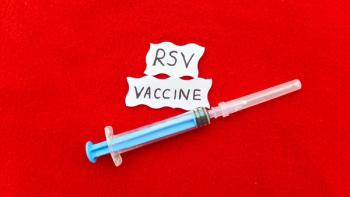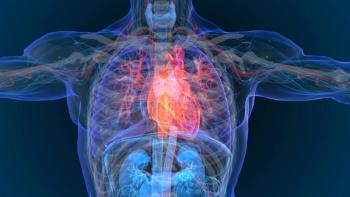
Nerandomilast Receives FDA Approval for Idiopathic Pulmonary Fibrosis
Key Takeaways
- Nerandomilast is the first FDA-approved treatment for idiopathic pulmonary fibrosis in over 10 years, addressing a critical unmet need.
- IPF is a progressive lung disease with high mortality, often requiring lung transplants; nerandomilast offers a new therapeutic option.
The FDA approves nerandomilast, the first new treatment for idiopathic pulmonary fibrosis in over a decade, offering renewed hope for patients.
The FDA has approved nerandomilast (Jascayd; Boehringer Ingelheim) tablets to treat idiopathic pulmonary fibrosis (IPF)—a rare, progressive, and severe disease that does not have a cure and has limited treatment—marking this therapy as the first approved treatment for this population in over 10 years.1
Understanding Idiopathic Pulmonary Fibrosis
According to the American Lung Association, IPF is the most common type of pulmonary fibrosis, which is a disease that causes scarring of the lungs, most often occurring in individuals aged 60 to 70 years. This scarring, or fibrosis, of the lungs causes difficulty breathing, along with irreversible and progressive lung damage that worsens over time. The most common symptoms of IPF are shortness of breath and cough. Progression varies depending on the patient; some individuals may experience slow or quick development. Many individuals with IPF also could face acute exacerbations, leading to suddenly intensified symptoms. In severe cases, individuals are recommended to receive a lung transplant; however, medications could slow disease progression before that transplant is needed. Experts suggest that patients with IPF stay active, eat well, and use oxygen therapy as prescribed to aid the condition.2
“For people living with pulmonary fibrosis, mortality remains unacceptably high, with every second person dying within 5 years of diagnosis,” Shashank Deshpande, chairman of the board of managing directors and head of human pharma at Boehringer Ingelheim, said in a news release.3
FIBRONEER Phase 3 Results Supporting Approval
The FDA approval was based on data from the randomized, double-blind, placebo-controlled FIBRONEER-IPF and FIBRONEER-ILD trials that each met their primary end point, demonstrating that nerandomilast can slow lung function decline among individuals with IP and progressive pulmonary fibrosis (PPF) compared with placebo.3
“As the first phase 3 trial program to demonstrate a nominally significant reduction in the risk of death in progressive pulmonary fibrosis, FIBRONEER heralds a significant advance for this group of patients, who face a devastating diagnosis and very limited treatment options,” Deshpande said in a news release announcing the positive data.3
A total of 1177 individuals in FIBRONEER-IPF and 1176 in FIBRONEER-ILD were randomly assigned to receive nerandomilast 9 mg twice per day, 18 mg twice per day, or placebo. In the pooled analysis, changes in the Forced Vital Capacity (FVC)—the maximum amount of air an individual can forcefully exhale after taking the deepest possible breath—were analyzed over 76 weeks.3
The results demonstrated that treatment with 18 mg of nerandomilast was linked with a nominally significant 43% reduction in the risk of death (HR, 0.57; 95% CI, 0.41-0.78). Among patients not receiving background therapy, the risk of death was reduced by 59% (HR, 0.41; 95% CI, 0.24-0.70). Additionally, a similar finding was observed in those taking background nerandomilast, with a 41% reduction in mortality risk (HR, 0.59; 95% CI, 0.37-0.94).3
The most common adverse events included diarrhea, COVID-19, upper respiratory tract infection, depression, decreased weight, decreased appetite, nausea, fatigue, vomiting, back pain, and dizziness.1
The study authors noted that the recommended dosage for nerandomilast is 18 mg orally twice a day, approximately 12 hours apart, which can be reduced to 9 mg twice daily for intolerability, apart from individuals also taking pirfenidone (Esbriet; Genentech).1
REFERENCES
1. FDA Approves Drug to Treat Idiopathic Pulmonary Fibrosis. FDA. News release. October 7, 2025. Accessed October 7, 2025. https://content.govdelivery.com/accounts/USFDA/bulletins/3f61959
2. American Lung Association. Idiopathic Pulmonary Fibrosis (IPF). Accessed October 7, 2025. https://www.lung.org/lung-health-diseases/lung-disease-lookup/idiopathic-pulmonary-fibrosis
3. Pooled data presented at ERS: nerandomilast monotherapy linked to nominally significant reduction in risk of death in IPF and PPF. Boehringer Ingelheim. News release. September 29, 2025. Accessed October 7, 2025. https://www.boehringer-ingelheim.com/human-health/lung-diseases/pulmonary-fibrosis/nerandomilast-monotherapy-ipf-ppf-death-reduction
Newsletter
Stay informed on drug updates, treatment guidelines, and pharmacy practice trends—subscribe to Pharmacy Times for weekly clinical insights.




















































































































































































































